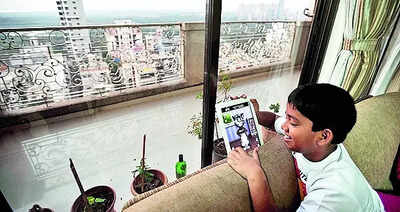Guiding your child through screens: Discipline, safety and shared digital learning

For many Indian parents, managing a child’s screen time feels like walking a digital tightrope. Ban the devices and you risk cutting your child off from classrooms, creativity and connection. Allow too much, and you fear attention deficits, social isolation or online harm. The old parenting rulebook—“limit screens, focus on books”—has expired. Welcome to the world of Parent 2.0, where technology isn’t the enemy but a tool that needs decoding, boundaries, and shared learning.
From ‘how much’ to ‘how well’: The new science of screen time
For years, pediatricians advised strict caps—one hour for children under five, two hours for older kids. But new research suggests that quality and context of use matter more than minutes on a timer.A 2023 review in the journal Multimodal Technologies and Interaction found that screen exposure impacts cognitive, language and socio-emotional development in both positive and negative ways, depending on whether screens are used passively or interactively. In other words, watching mindless cartoons for hours differs vastly from co-watching a science video with a parent.Another comprehensive analysis featured in the Public Health in Practice Reviews concluded that moderate, supervised digital use can mitigate potential harm. For parents, this means focusing less on duration and more on design—what’s being watched, with whom, and why.
Digital discipline: Setting rules that grow with your child
The digital household requires a new kind of discipline—call it e-discipline. Instead of confiscating devices or resorting to scolding, psychologists recommend collaborative rule-making and predictable routines.A landmark study published in Cyberpsychology, Behavior, and Social Networking examined 1,000 adolescents and found that inconsistent digital rules correlated with greater screen addiction and anxiety. Children who co-created “tech rules” with parents showed higher self-regulation and lower emotional distress.Practical steps include:
- Defining “no-screen” zones (dining table, bedroom)
- Using in-device timers or parental dashboards transparently
- Practising the “tech-pause” rule—a short reflective break before using a device
- Avoiding the “digital pacifier” habit—handing gadgets to calm tantrums, which, research shows, increases emotional dysregulation later
The idea is not to control, but to coach children towards balanced, mindful use.
Digital safety: Protecting without policing
Safety is the biggest anxiety for parents—but control tools alone aren’t enough. Supervision, education, and trust work better than surveillance. A growing body of research reveals that unsupervised screen time, not total time, is the strongest predictor of exposure to harmful content and online bullying. Hence, experts recommend co-use and guided discovery over blanket bans.As parents, you can adopt layered strategies:
- Discuss online footprints, cyberbullying and privacy openly
- Involve children in setting filters and privacy settings, explaining the “why” behind each rule
- Create digital check-ins—weekly chats where kids share what they explored online, what excited or unsettled them.
- Encourage “reporting comfort”: assure children that mistakes or uncomfortable encounters will lead to dialogue, not punishment.
This approach builds digital citizenship rather than fear.
Co-learning: Turning screens into classrooms
If you can’t beat the algorithm, join it—wisely. Co-learning, or “media co-engagement,” turns screens into shared classrooms. In practical terms:
- Watch and discuss content together: Pause, ask questions, relate it to real life
- Choose active apps that involve creation (drawing, coding, building) over consumption
- Set “tech exploration hours” where parent and child learn something new together—a new design tool, science channel, or language app
- Celebrate digital curiosity: ask your child to teach you something they discovered
- Done right, co-learning strengthens both digital literacy and family connection.
The connected parent: From control to collaboration
In the end, parenting in the digital age is less about fighting screens and more about reshaping habits. The goal isn’t to raise a child who avoids technology, but one who uses it consciously, creatively, and safely. Parental engagement, not restriction, predicts better learning and emotional outcomes. When curiosity replaces fear, when rules become rituals, and when families learn side by side, screens stop being battlegrounds and start becoming bridges.






